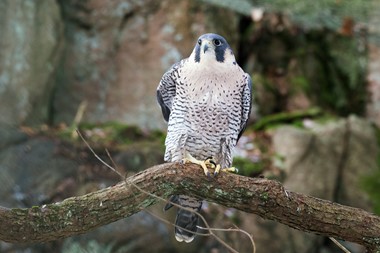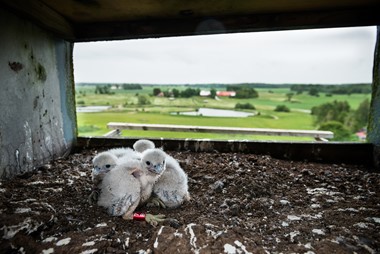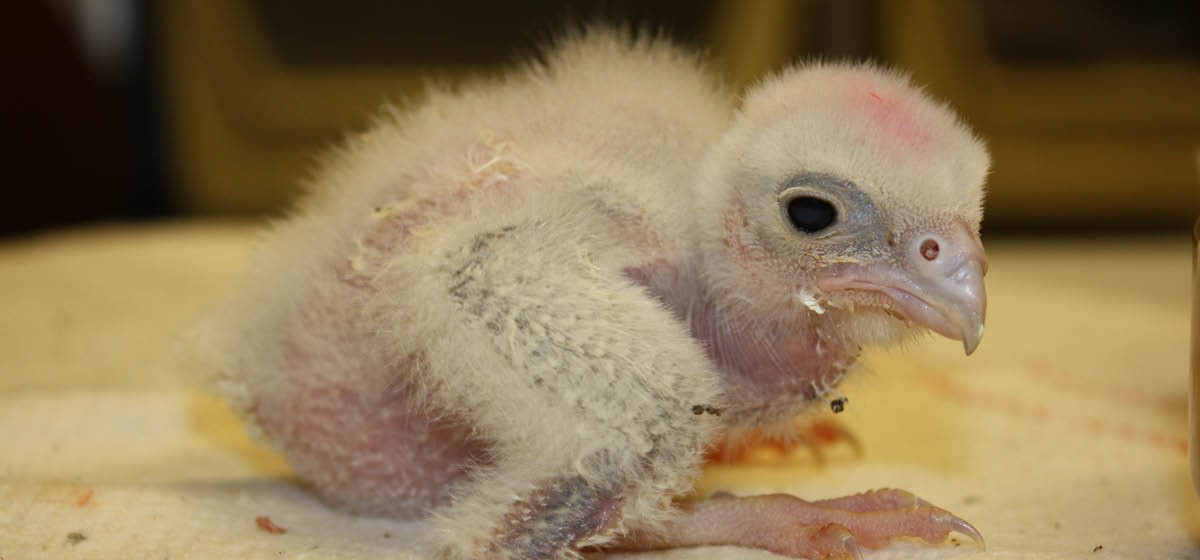Peregrine falcon
In the mid-1900s, methylmercury and DDT were used in Sweden’s agriculture and forestry industries. Both toxins had serious consequences for our wild birds, causing paralysis, compromising foetuses and leading to defective eggshells. Interest from egg-collectors grew as, among others, the peregrine falcon became increasingly rare. In the 1970s the remaining breeding falcons had to be watched around the clock to stop their eggs being stolen.
To protect the peregrine falcon in Sweden, a project was launched with the goal of creating a gene bank with Nordic falcons from Sweden, Norway and Finland. It was hoped to get peregrine falcons to breed in captivity so that their young could later be placed out in the wild in south-west Sweden. This method had previously succeeded in saving the Eurasian eagle-owl in western Sweden. The project’s first priority was to recreate a falcon strain of 25 to 30 breeding pairs in south-west Sweden.
Peregrine falcon at Nordens Ark. Photo: Erik Edvardsson
In 1974 the first eggs were collected from a nest site in Norrbotten, and the breeding work got under way. The breeding cages were scattered throughout the country, and it turned out to be difficult to do the work professionally. In partnership with the Swedish Society for Nature Conservation and Gothenburg Ornithological Society, a new breeding facility was opened in 1987 at the bird centre on the island of Hisingen. The project’s initial objective of 25 breeding falcon pairs in south-west Sweden was achieved in 1999 and it was decided to discontinue breeding at the centre. To reach the goal, more than 500 youngsters were released into the wild over 12 years. On June 13, 2000, Nordens Ark opened its new peregrine falcon breeding facility. At the same time, Nordens Ark took over the breeding part of the Peregrine Falcon Project from the Hisingen bird centre. Since that time, about 200 young falcons have been placed out from Nordens Ark, the vast majority in central Sweden.
Over the years, the Peregrine Falcon Project has become a highly successful fauna project, and the future for Sweden’s peregrine falcons looks bright. Since the start in 1972, the species has gone from being critically endangered, with years going by without a single successful breeding in the wild, to being listed today as near threatened. There are now more than 200 breeding pairs and about a hundred more establishing a territory.

Ringed chicks in Fjugesta 2019. Photo: Marie Mattsson/Nordens Ark



